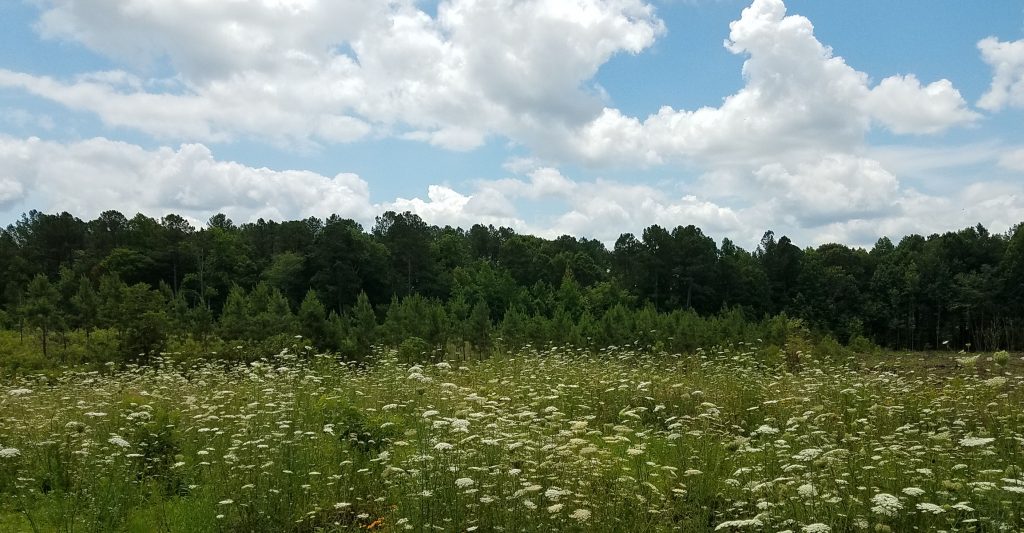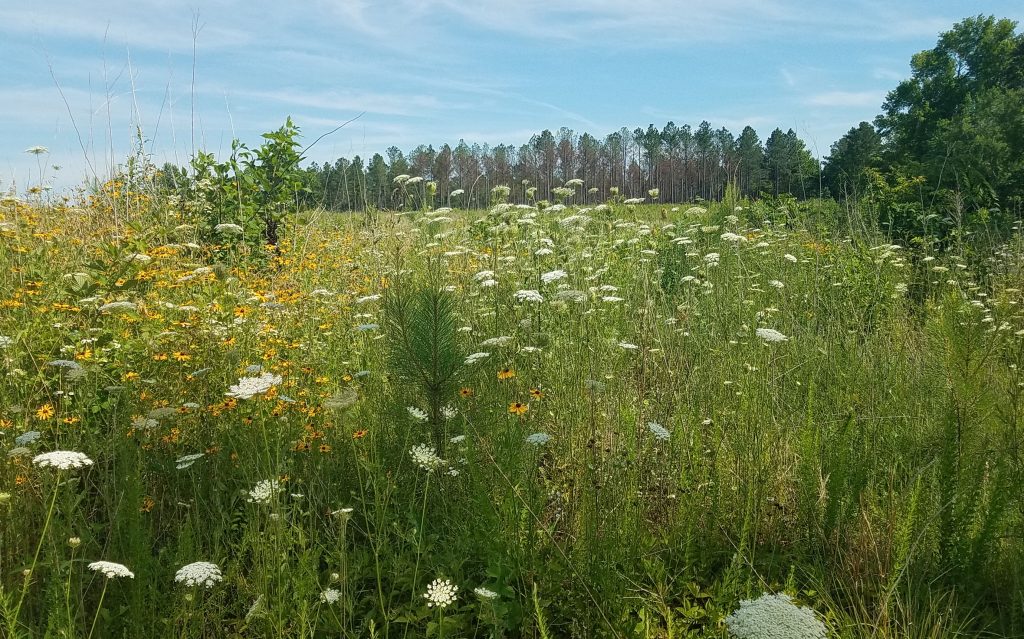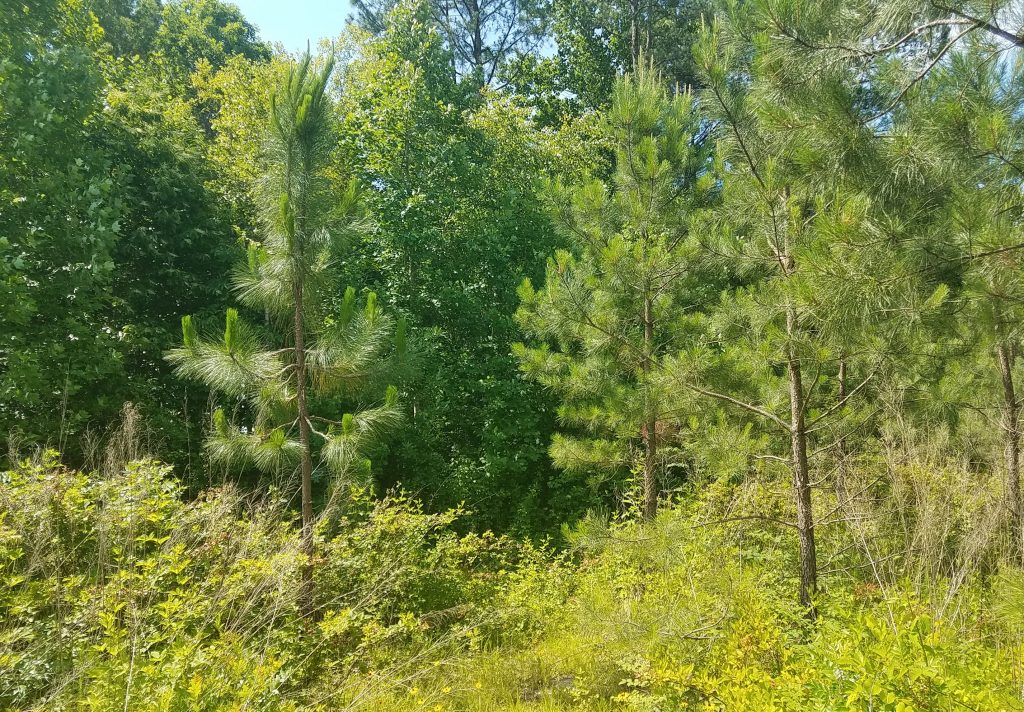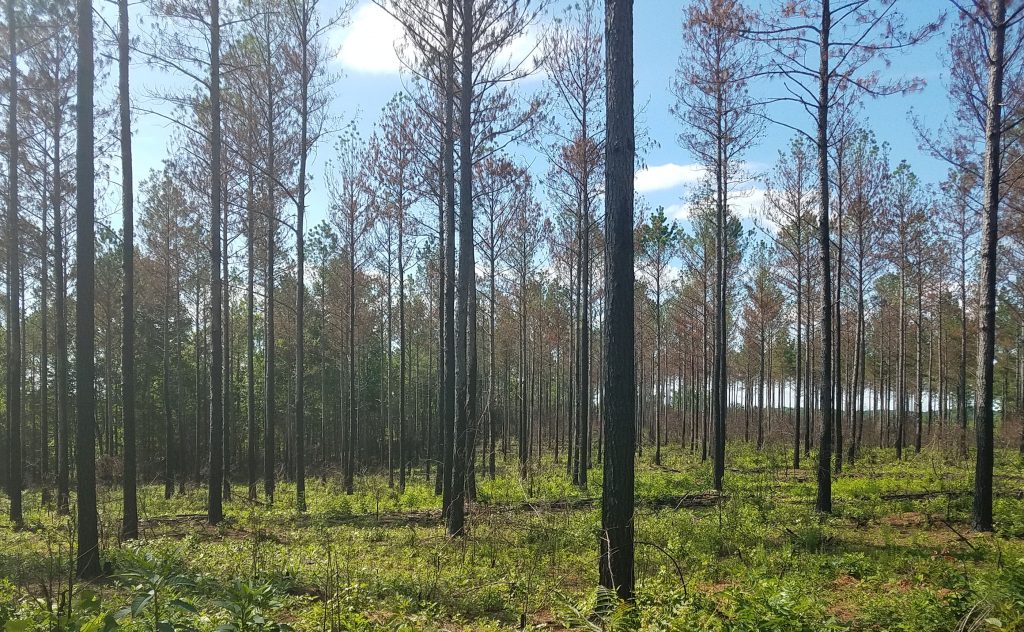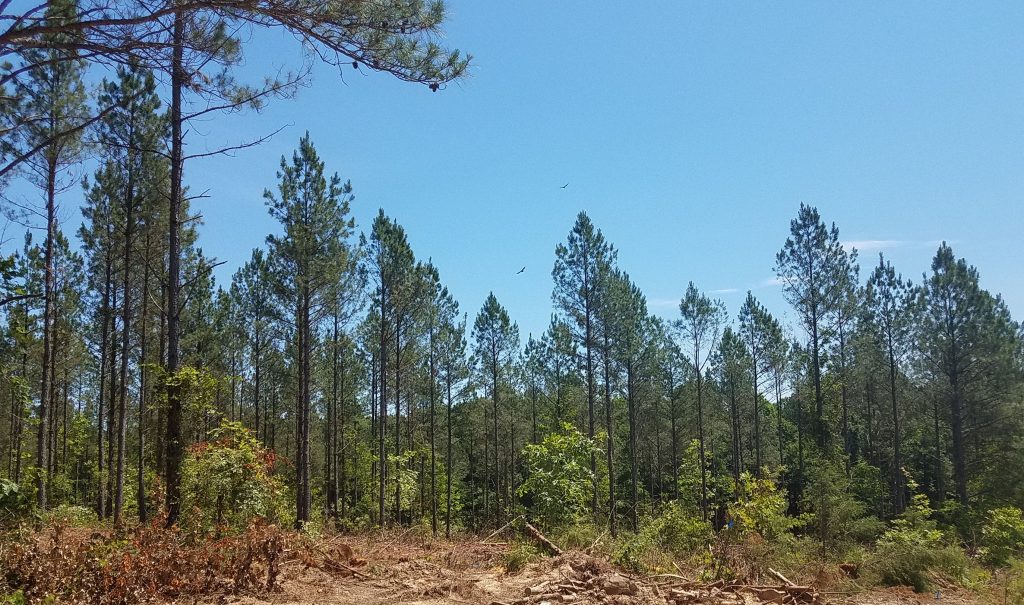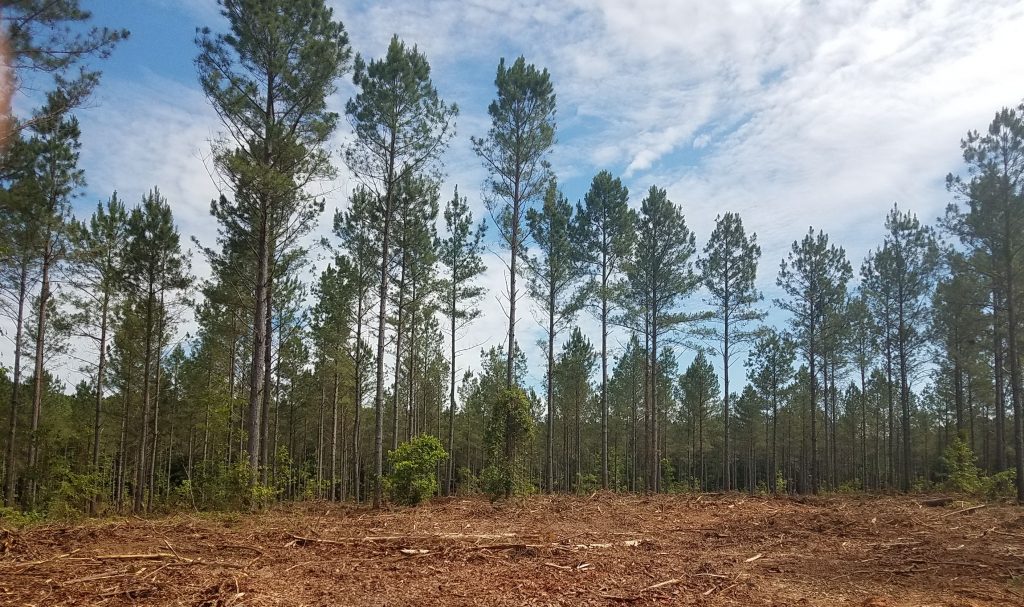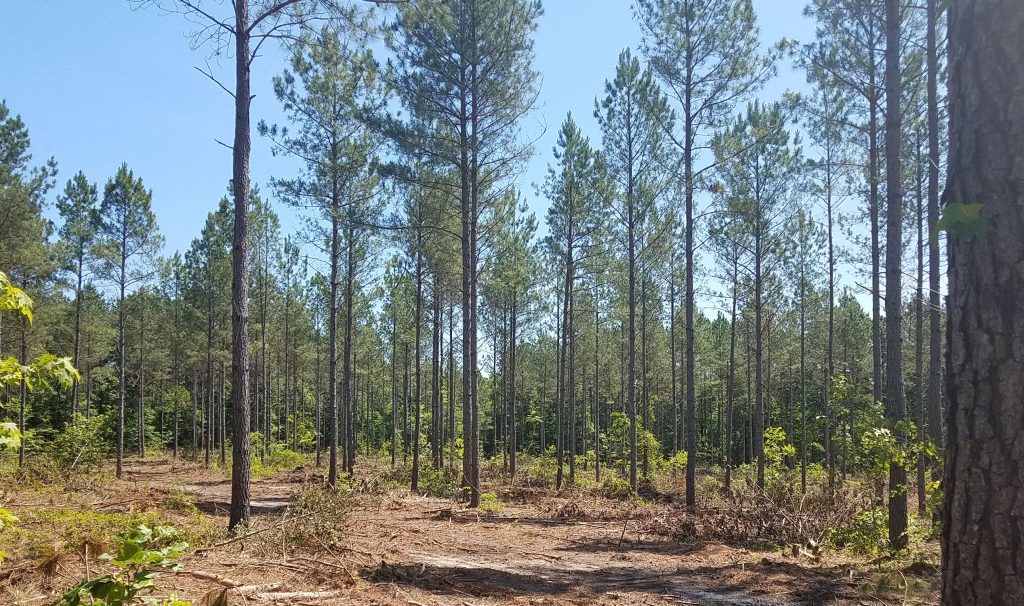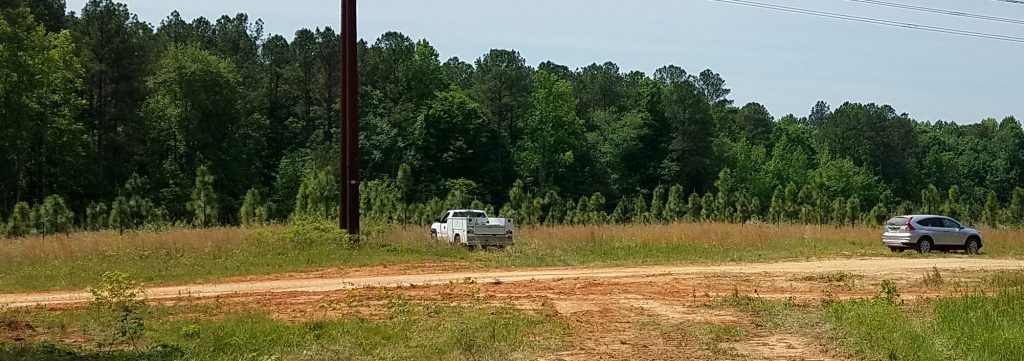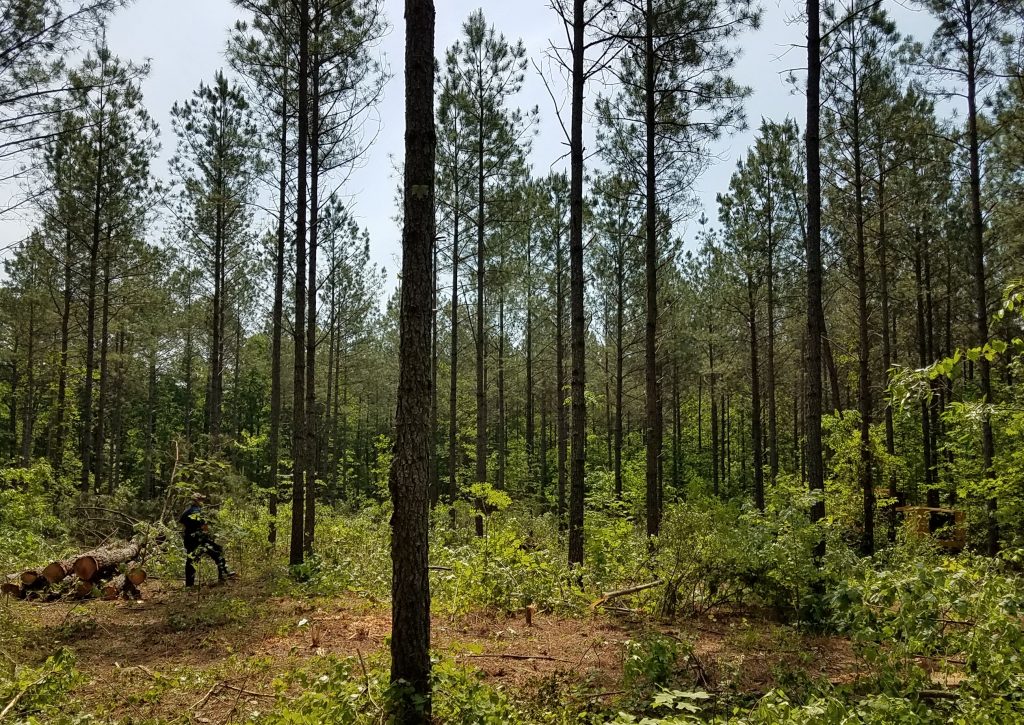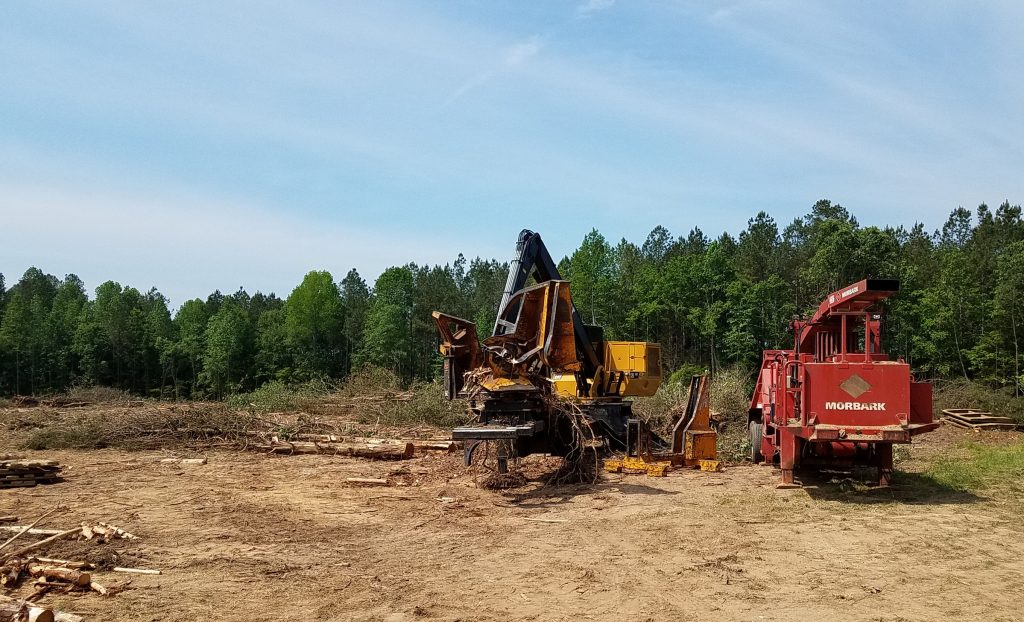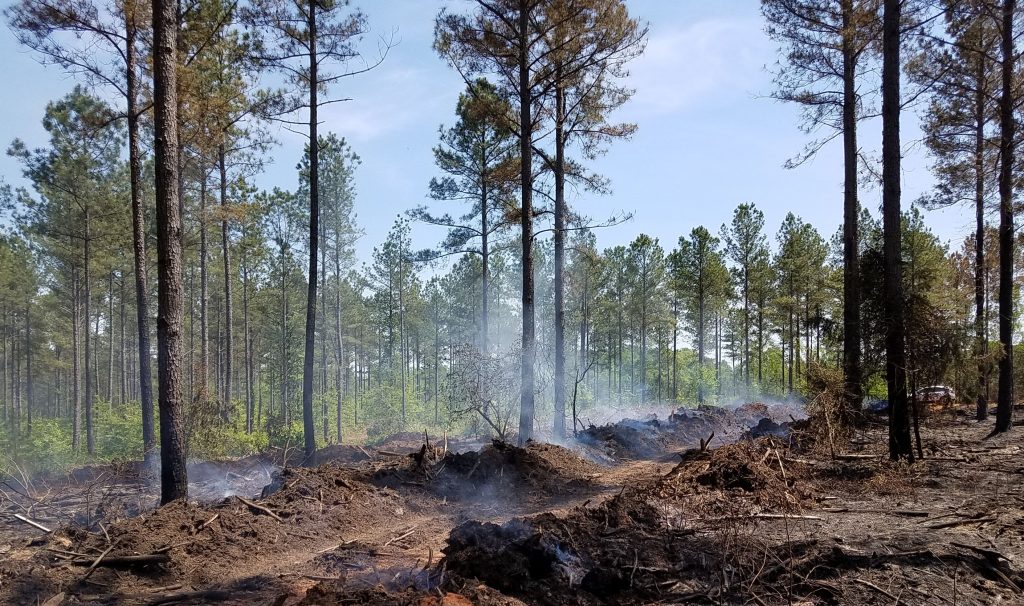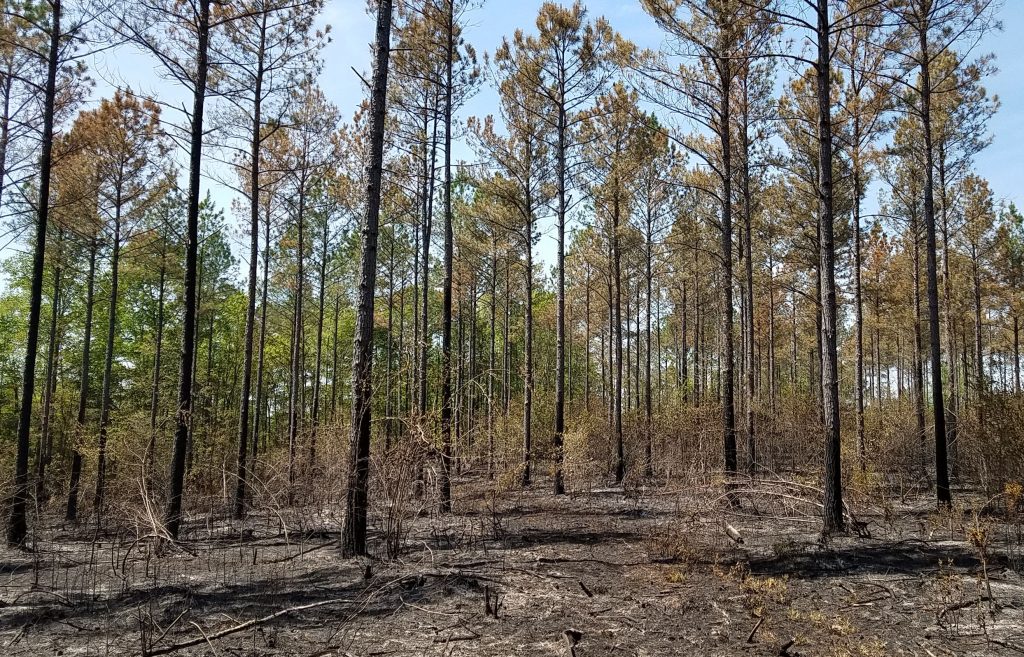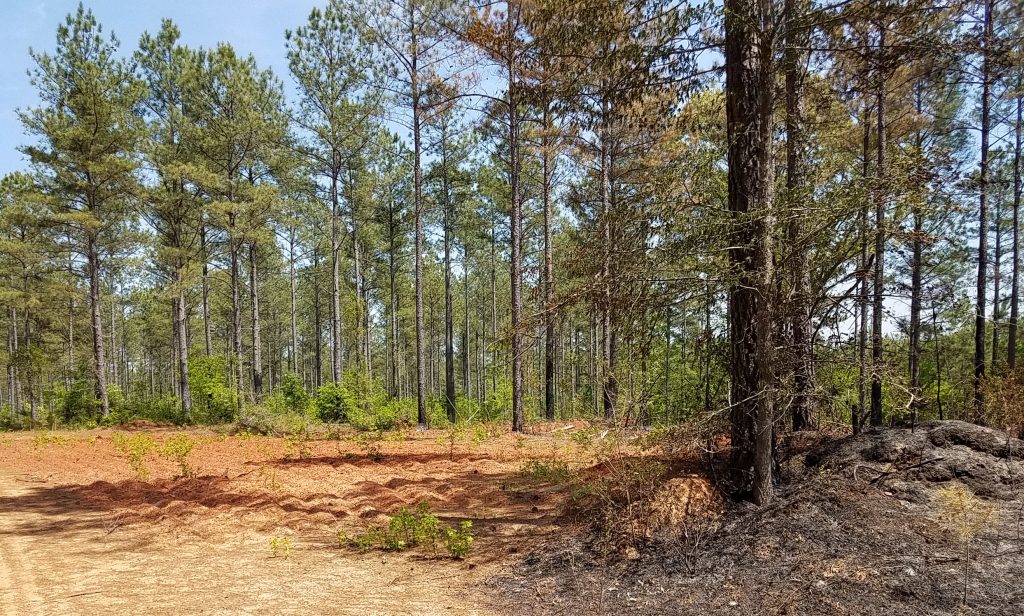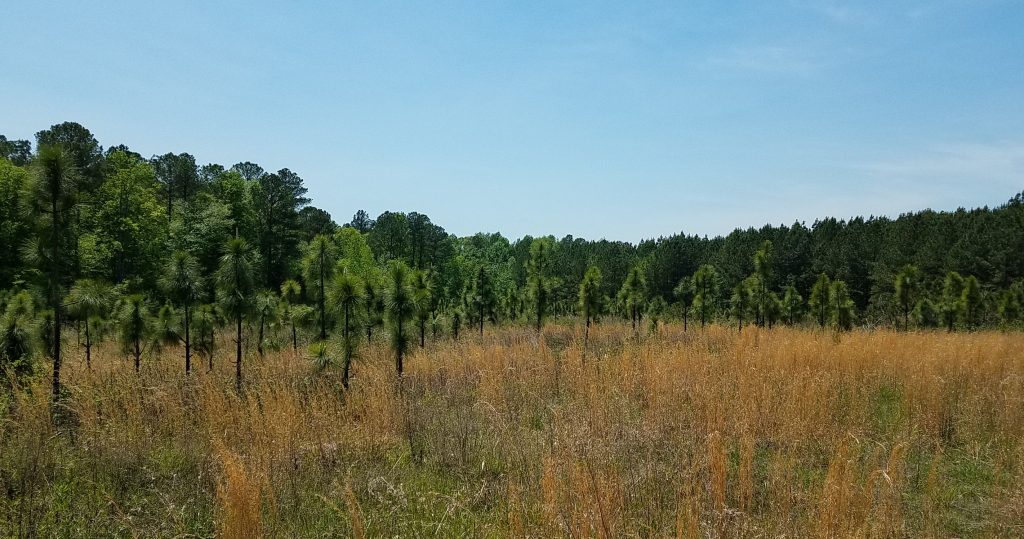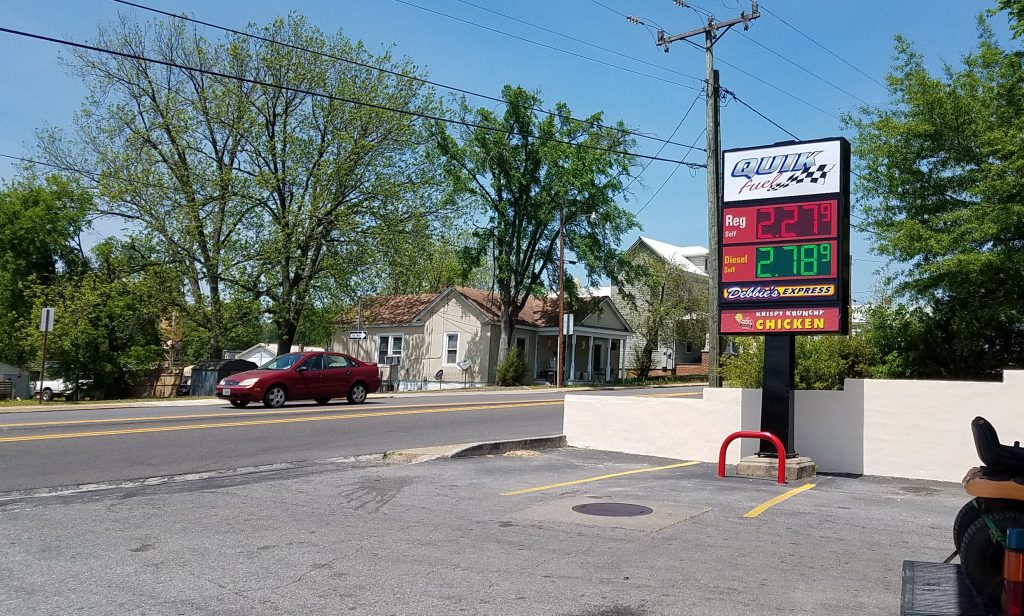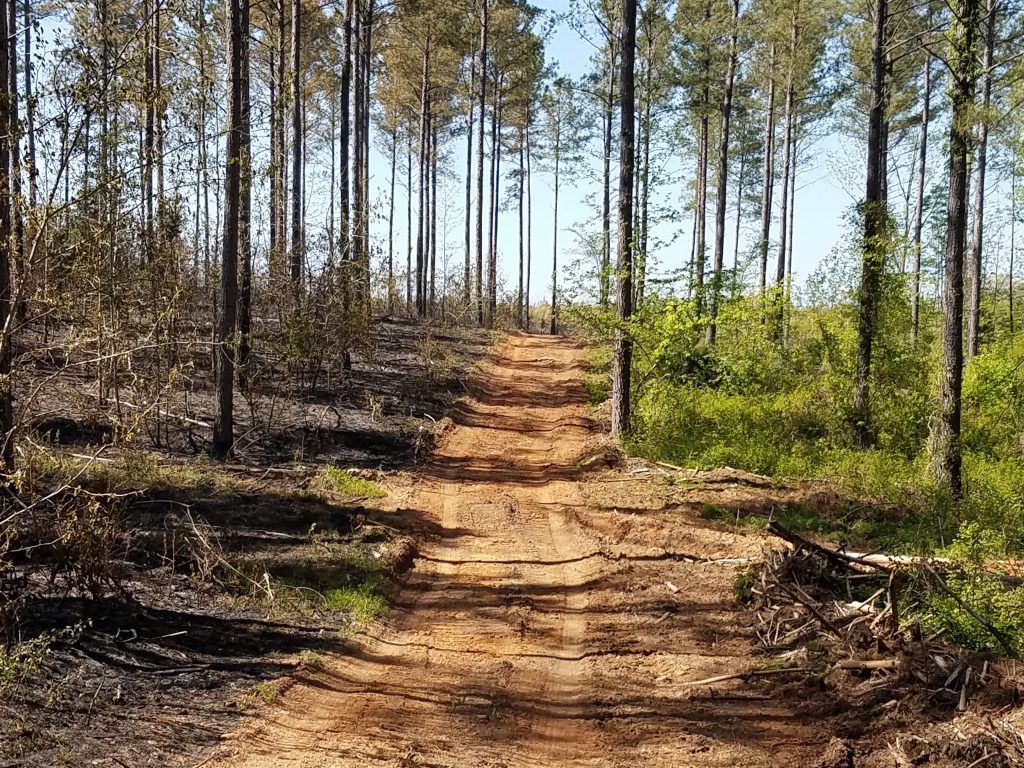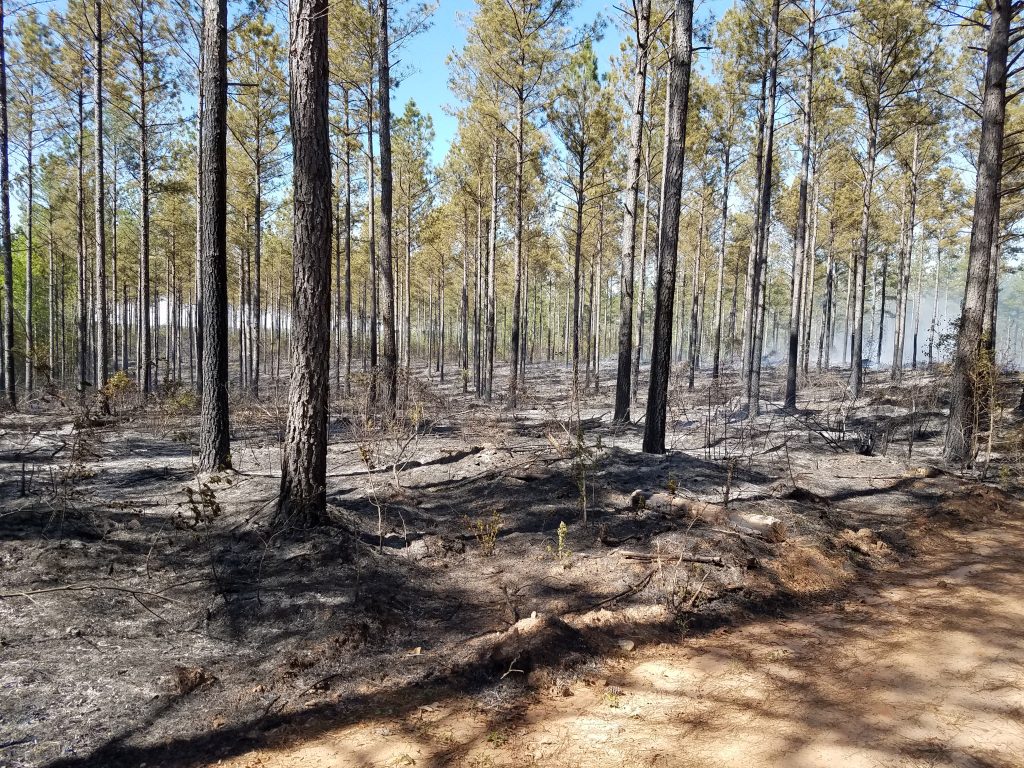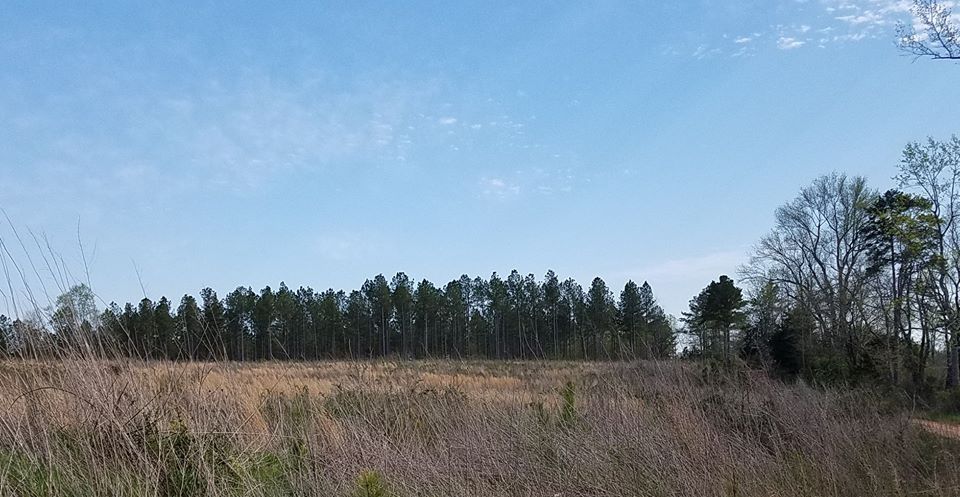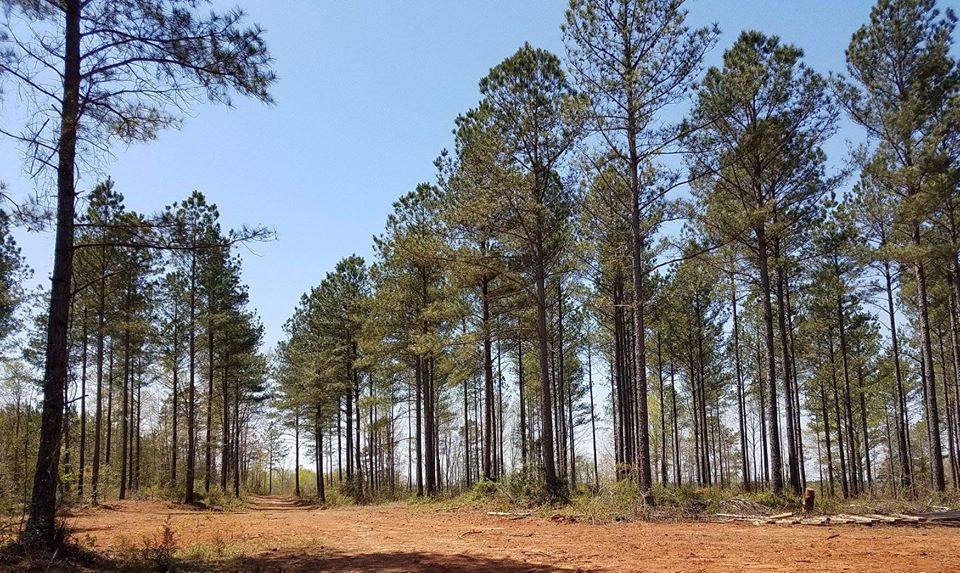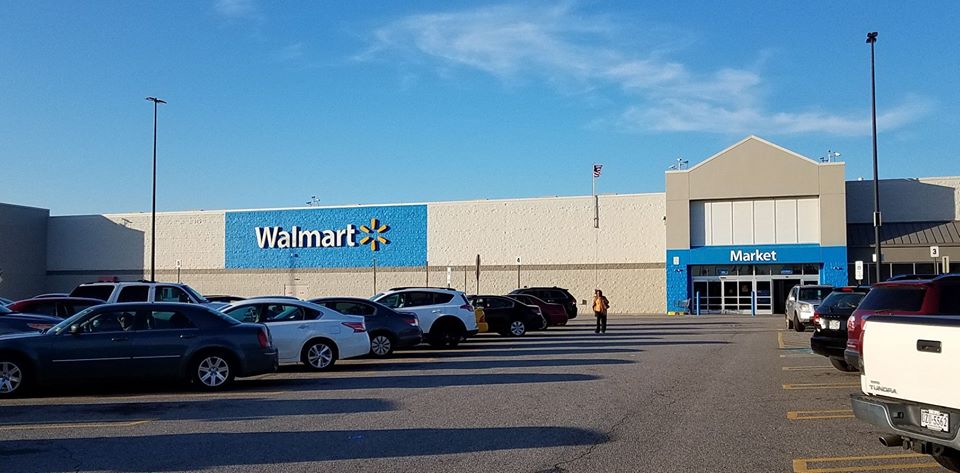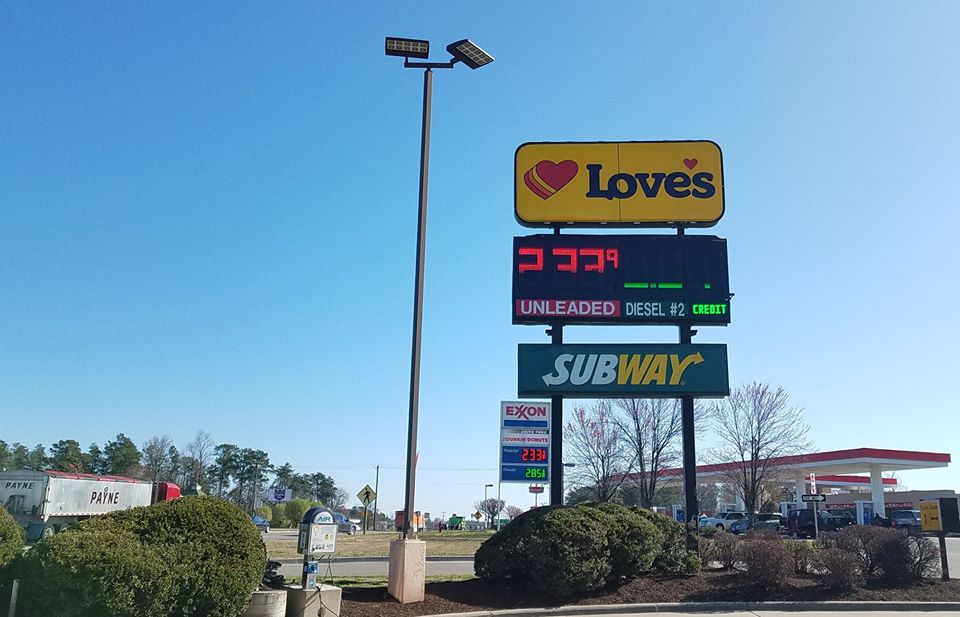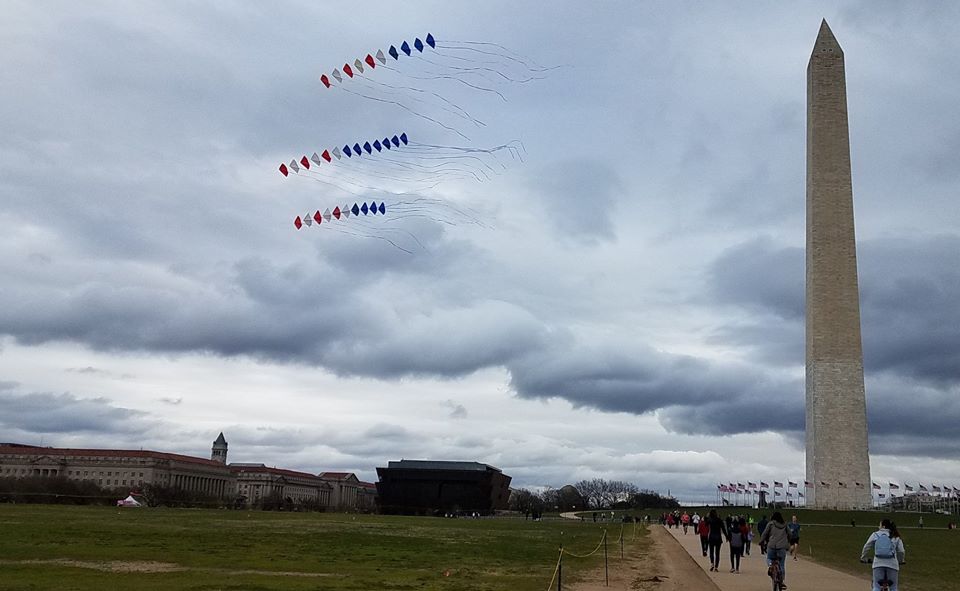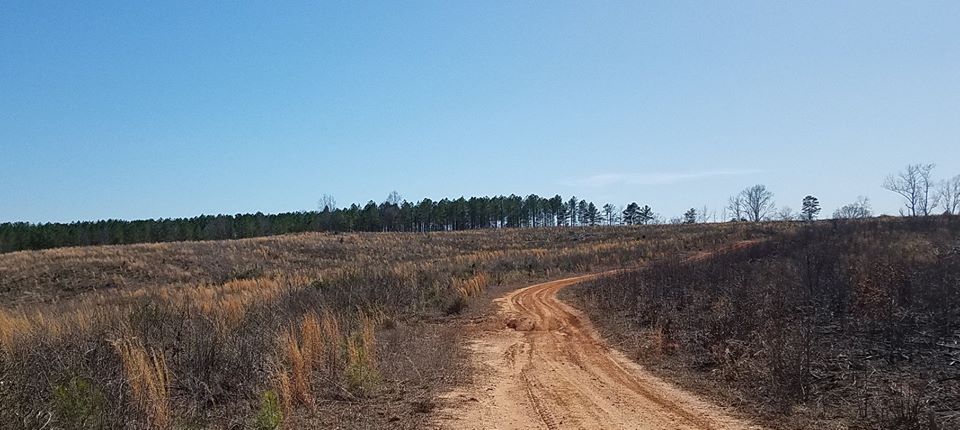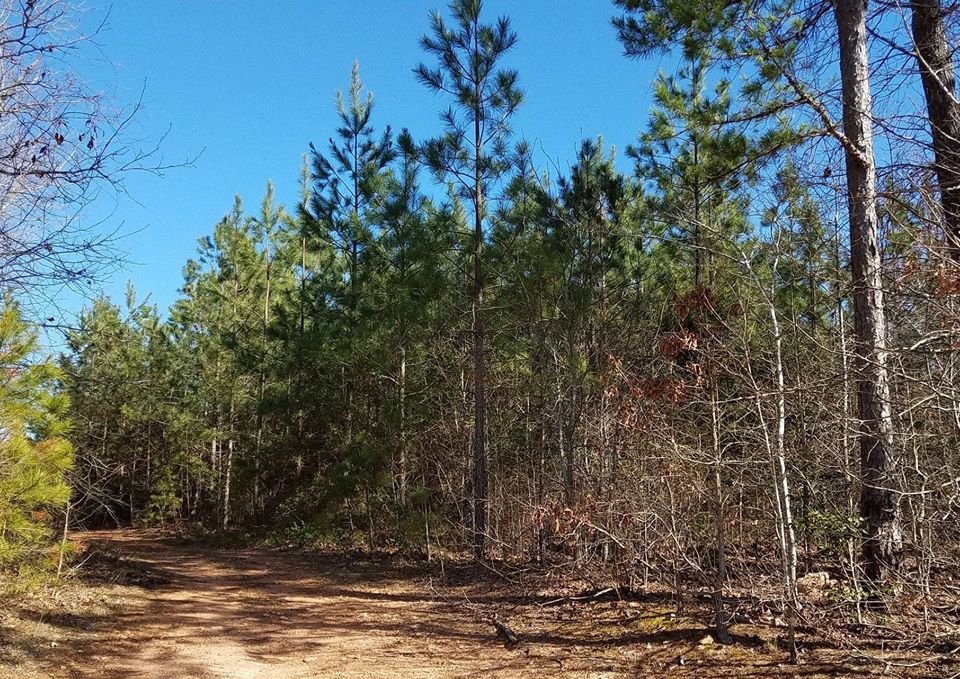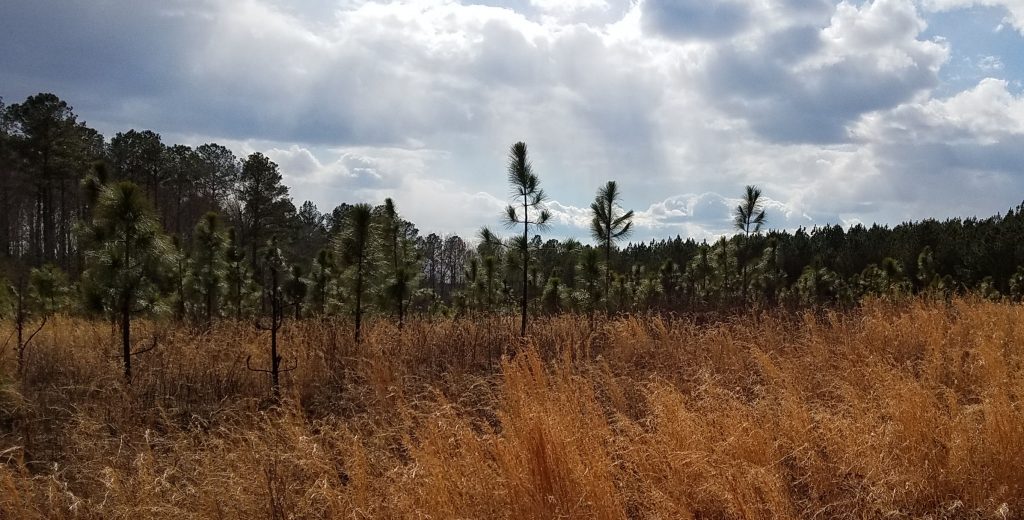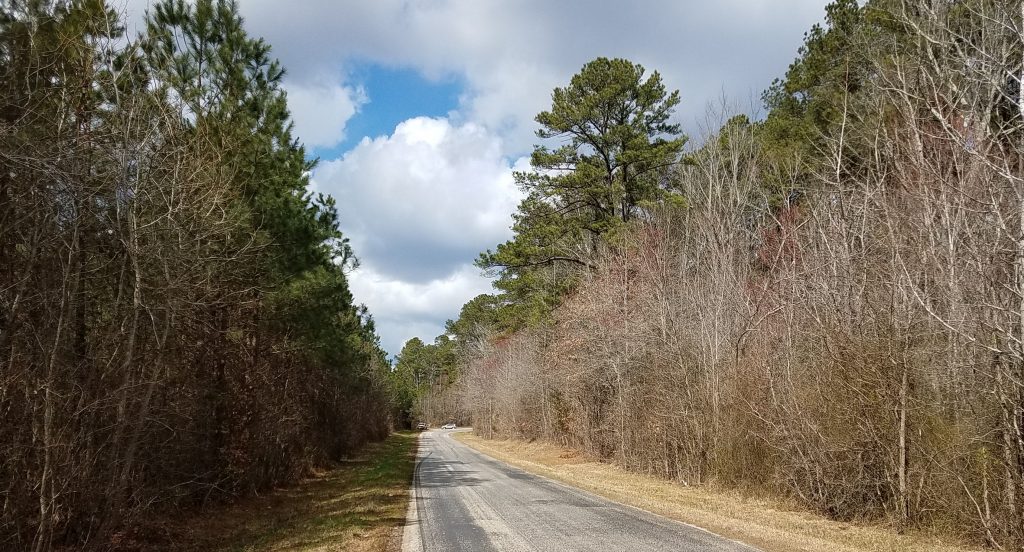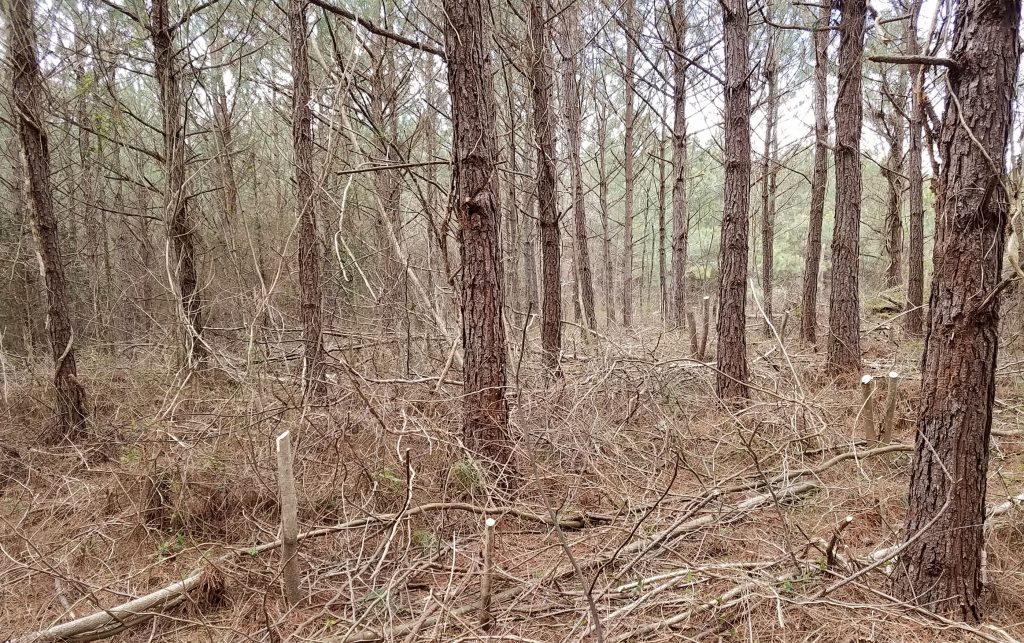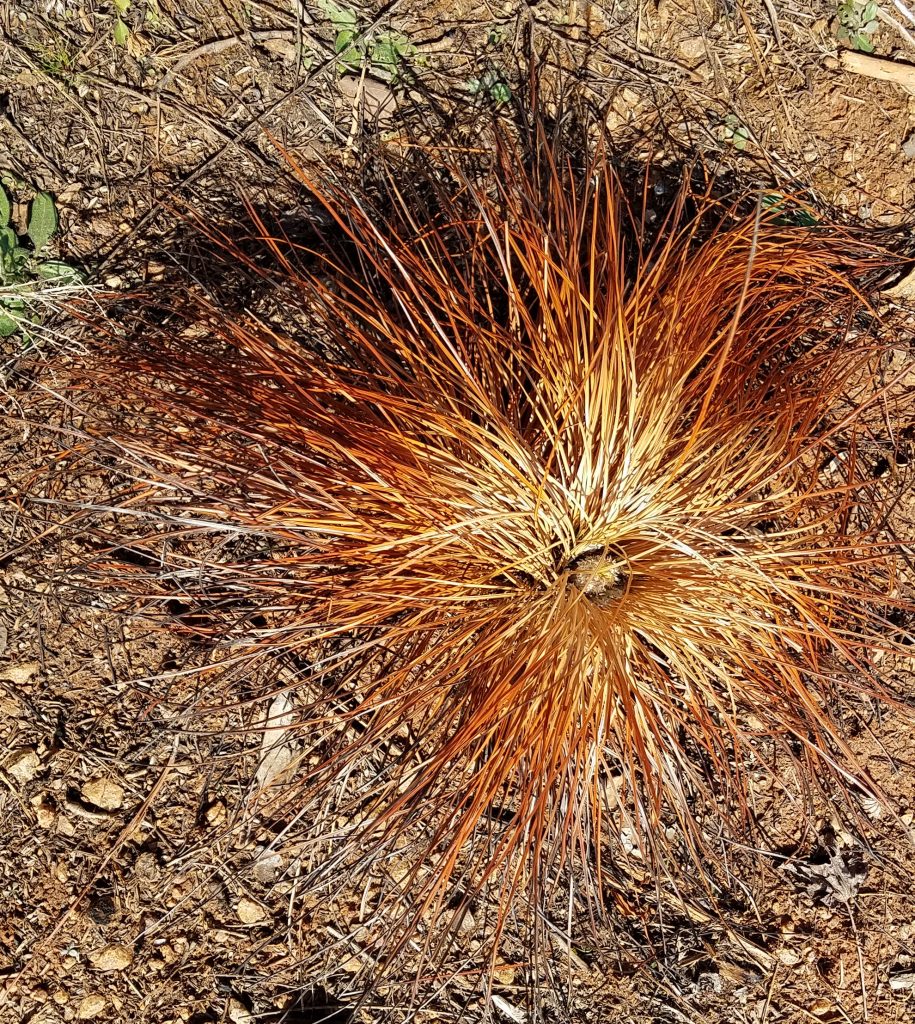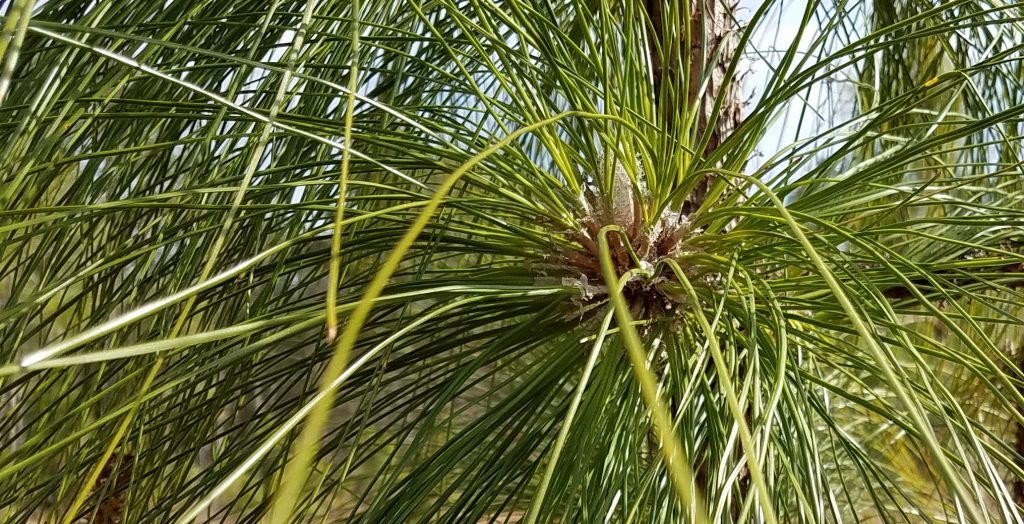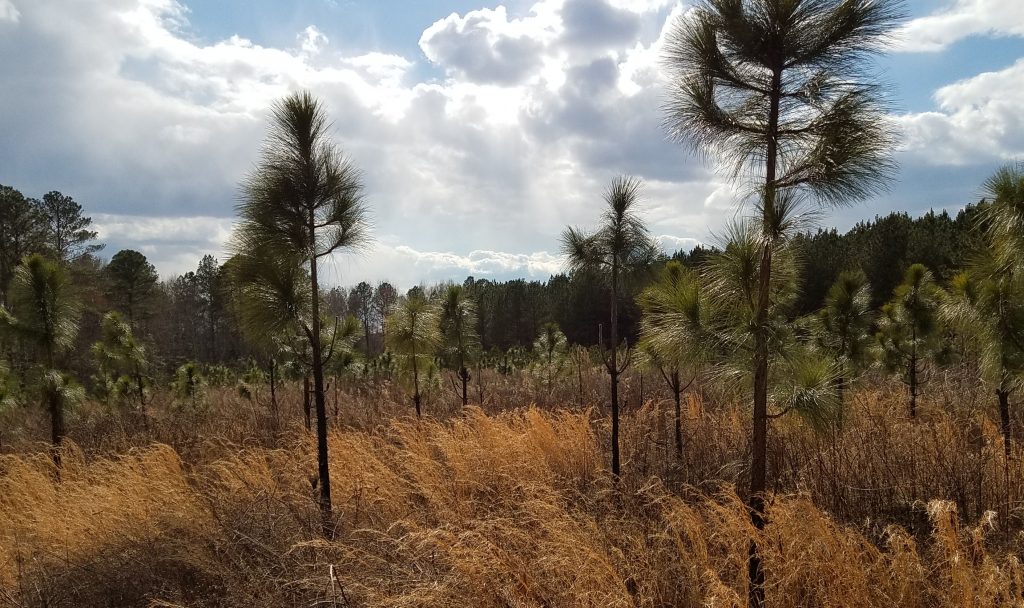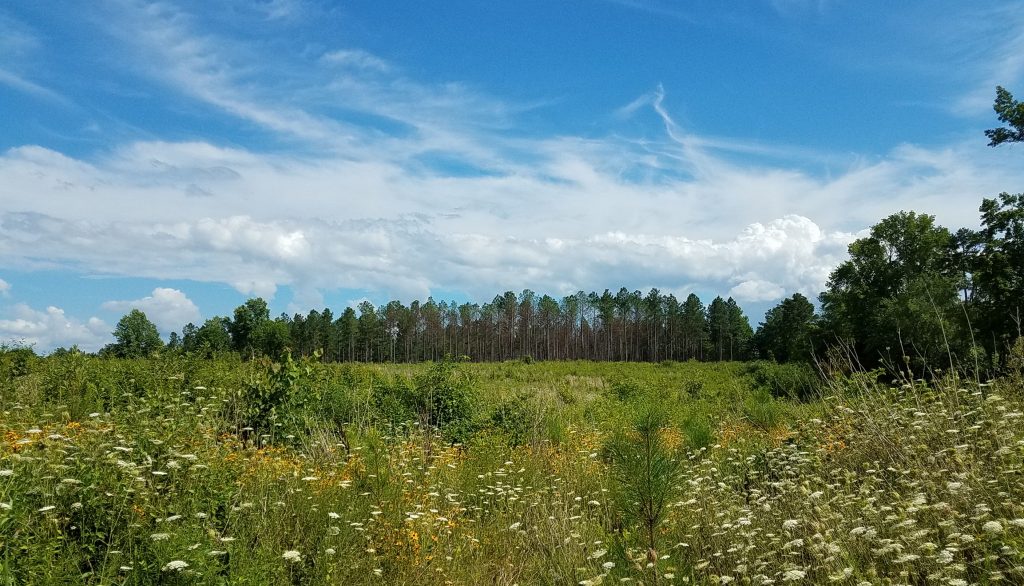
Burning Doubt
I will never beat the feeling of dread when I see my scorched trees after a fire. They are not burned, but the heat plumes rose more than thirty feet. Science and experience tell me that things will be okay and that the fire is a necessary and useful part of southern pine ecology, but I can know all that and still not feel it. I am happy to report that – again and as expected – my fears were overblown. The trees on the most recently burned patch are greening out with new needles, as you can see in my first picture. The burned are in the distance. I have closer pictures but I liked the panorama. The longleaf that we burned last year are looking great, as you can see in the next picture. A forest is more than just the trees, but the trees are the first thing you see and the one that sets your mood when looking to the forest.

My management strategy for all our tree farms is atypical for Brunswick County and I am not exactly sure how it will work out. Let me rephrase – I have an idea what I want and a bit vaguer idea of how to get there, but I have lots of doubts about conditions on the ground and what will happen when I make changes.
Don’t Copy Nature; Do Try to Understand Natural Principles
A diverse ecosystem that respects and uses natural principles but does not merely mimic nature, that is what I want on my land and what I hope to learn from my land. When talking to people generally, I often use words like “restore.” People like the idea of restoration. I do too, but I know restoration is not an option. We have too many changes in Virginia, too many invasive plants and too much human interaction ever to restore what was once here. Beyond that, there would be no way to know what you should restore. Even with precise (and impossible to obtain) information about what was here and how everything was connected, in what year was everything exactly the way it should be?
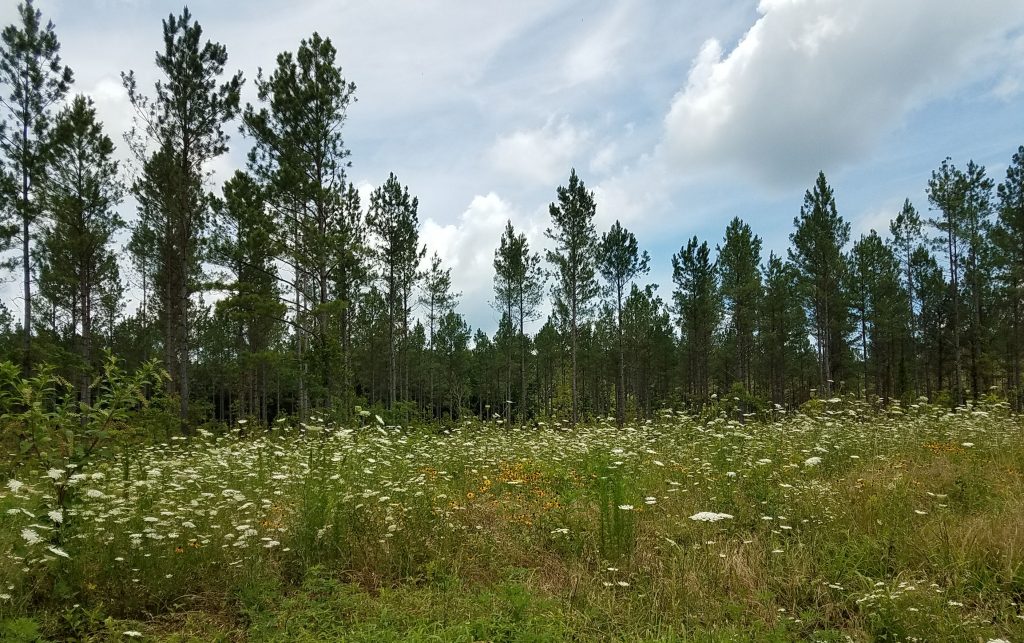
The answer is never. Nature is never finished. Virginia of 1608 is different from but not better than the Virginia of 2018 or how it was during the last ice age or when dinosaurs roamed Our beloved longleaf pine ecosystem began its development on coastal plain exposed by much lower sea levels during the last ice age and “invaded” this land as its home range disappeared under the rising seas.
All we can do is move forward using the principles in an iterative way, trying something, learning something and then trying again with the profound understanding that this too is passing, and knowing that much you get from being in nature is being in nature.
You Can Never Walk Twice in the Same Forest
When I fell in love with nature, it was the feeling of the eternal that attracted me. In nature, I saw permanence, belonging and balance. Sure, we foolish humans often upset the balance. I blamed ignorance and greed. It was an easy morality tale. But I expected that if we left it alone long enough, nature would come back “as it should.” I thought my opinions were science-based, but they were not. Today what I love about nature is the impermanence. Each moment is unique to be appreciated for what it is. A small alteration may grow into a great change that everybody sees or maybe you won’t perceive it at all, but (paraphrasing Heraclitus) you cannot walk twice into the same forest. That is what I love now.
… And Know the Place for the First Time
It is a shame that the term “know your place” carries with it so many pejorative connotations, but I am going to use it here in a positive, maybe even a transcendent way. Looking back over my life, I think that I have spent it trying to know my place in human society and in the greater nature. Before I get anybody excited about the meaning of life, let me say that I have not found it and I know that I never will. This is not a despondent thought. No, it is a glorious one to know that you cannot know, and feel your own impermanence. It means you can enjoy all the steps on the journey. I have brief glimpses, epiphanies sometimes when I am in the flow, almost always when I am engaged with natural systems. It is a mystical feeling that I can report but not properly describe, when I feel part of all that was, all that is now and all that will become. I know others have had similar. The moments do not last long, but the memory sustains.
I don’t know what I would do if I was deprived of contact with nature. I don’t think I am strong in that way. I think I would crumple at being removed. My place is as an interacting part. Pull it out and there is nothing more.
What’s Happening Down on the Brunswick Farms
Lots of interesting developments at the farms. The thinning looks good. I walked all over the place and came up with hundreds of things I want to do. Now I have to narrow it down to a couple I can accomplish. You see the thinned pines in picture # 3. I took that picture through the wildflowers in front of them. Speaking of restoration, you know that lots of those beautiful flowers are not native. This is not a picture you could have taken in 1607, or more correctly painted. But the changing landscape conforms to natural principles. Queens Ann’s Lace, a beautiful flower in the carrot family, had been in North America for more than 300 years. It has earned its place.
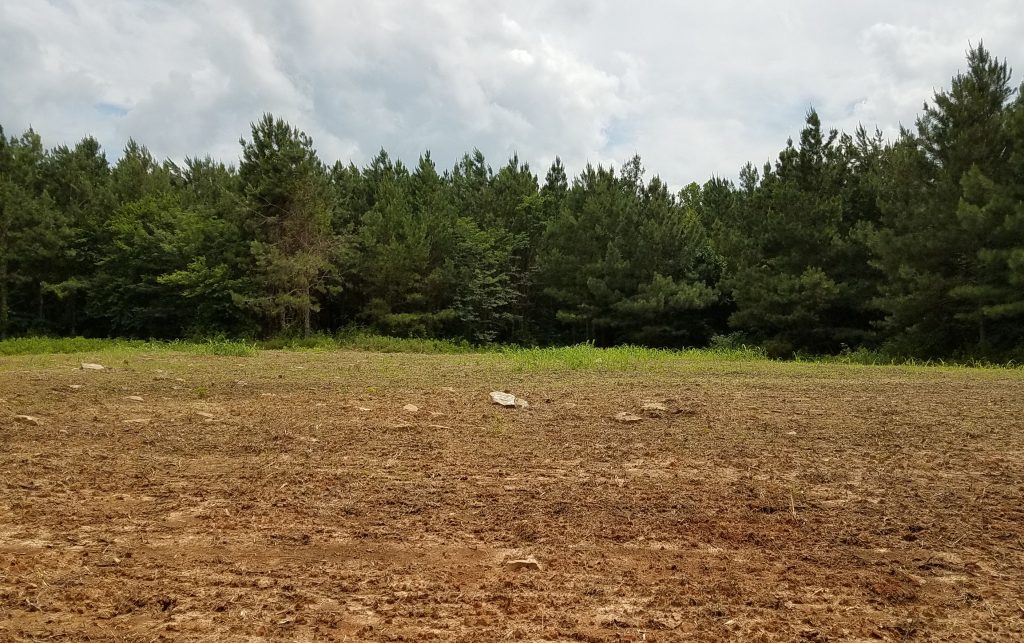
Next is (right above) one of the pollinator habitat plots. I want to thank NRCS for helping with this. We got a grant to help defray the costs of seeds. I have more, but I include only one, since they are just starting. We got them in late because the seeds were hard to get. You can see the sunflowers coming up if you look closely. They will provide quick cover and the perennial warm season grasses and forbs will come in after. Sunflowers are “native” to North America, but this variety is not from around Virginia. Again, what does native or restoration really mean anyway?

Above are some bald cypress I “discovered”. I knew that my friend Eric Goodman had planted them in 2012, but I never could find them and thought they died out. The recent harvest next to them revealed them and is now giving them the sun they need. They are in a wet rill (pictured below) and should do well with the more sun. They are doing okay now. I found a couple dozen.

Below shows both sides of the fire line. We are burning 1/3 of this track each year, creating patches of early succession landscape.
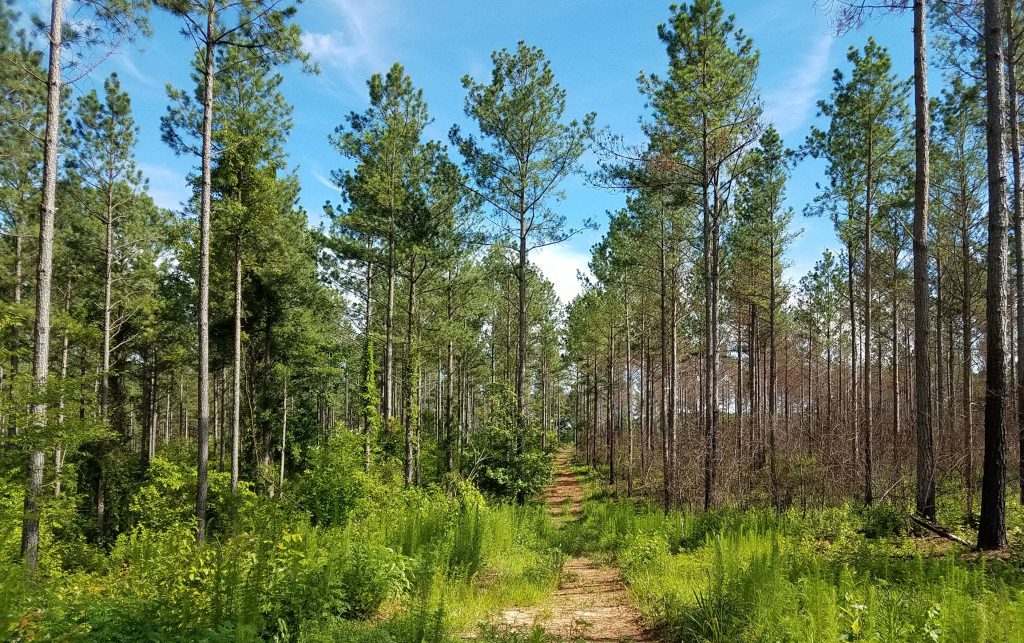
Below shows our 2012 plantings from the area under the power lines. Some people hate power lines and they detract from use of land, but on the plus side they provide long narrow acreage of early succession habitat.
